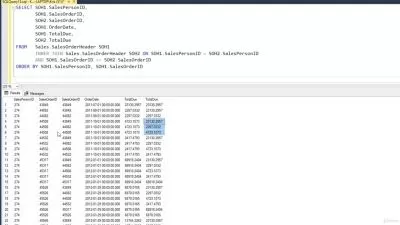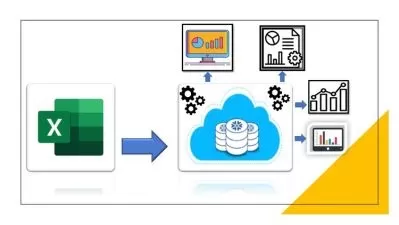SQL For Beginners: Introduction to SQL Vs. NoSQL
Charles Smith
1:45:35
Description
SQL For Beginners: SQL Vs. NoSQL
What You'll Learn?
- Create normalized data schemas by following the rules of "normal forms"
- Bring these schemas to life in a relational database using the SQL Data Definition Language
- Add and manipulate data in these schemas using the SQL Data Manipulation Language
- Enable business rules at the level of the database using constraints
- Keep your relational database running quickly and efficiently despite storing and querying large amounts of data
- Use two non-relational databases, MongoDB and Redis
Who is this for?
More details
DescriptionNoSQL (Non-SQL or Not-only-SQL) databases are increasing in popularity due to the growth of data as they can store non-relational data on a super large scale, and can solve problems regular databases can't handle. They are widely used in Big data operations. Their main advantage is the ability to handle large data sets effectively as well as scalability and flexibility issues for modern applications. There are different categories of NoSQL databases and they are used in social media such as with Facebook and search like Google and in other types of sectors like Health, Aviation, Education and other areas.
In this course we will Use the Couch DB NoSQL database. We will create a database, load data and query a database. Learn techniques such as querying with JavaScript, working with nested data, and creating views. You will learn how to query a database without SQL by using JavaScript Map and Reduce functions Using the couch DB database you will learn how to insert data into the database using Key -Value pairs where every data key will have a corresponding value. Security and integrity of a database is very important .
The volume of data available is huge and increasing daily. Structured Query Language -SQL (pronounced as sequel) is the standard language used to communicate and interact with data stored in relational management database systems like Microsoft SQL Server Oracle, PostgreSQL, MySQL etc.
Different database management systems have their own proprietary version of the SQL language but they all conform to using some commands in SQL the same way. Microsoft SQL Server's version of SQL is known as Transact-SQL (T-SQL). In this course you will learn the basics of the SQL language and Transact-SQL since both use certain commands in the same way. We will learn to create a database, table and how to insert data into a database table as well as querying it.
Who this course is for:
Beginners to NoSQL Databases
Beginners to SQL
Who this course is for:
- Data Engineers
- Database Engineers
- DataOps Engineers
- Data Analysts
- DevOps Engineers
- Data Architects
- Data Visualization Engineers
- System Engineers
- Solution Architects
- Penetration Testers
- Ethical Hackers
NoSQL (Non-SQL or Not-only-SQL) databases are increasing in popularity due to the growth of data as they can store non-relational data on a super large scale, and can solve problems regular databases can't handle. They are widely used in Big data operations. Their main advantage is the ability to handle large data sets effectively as well as scalability and flexibility issues for modern applications. There are different categories of NoSQL databases and they are used in social media such as with Facebook and search like Google and in other types of sectors like Health, Aviation, Education and other areas.
In this course we will Use the Couch DB NoSQL database. We will create a database, load data and query a database. Learn techniques such as querying with JavaScript, working with nested data, and creating views. You will learn how to query a database without SQL by using JavaScript Map and Reduce functions Using the couch DB database you will learn how to insert data into the database using Key -Value pairs where every data key will have a corresponding value. Security and integrity of a database is very important .
The volume of data available is huge and increasing daily. Structured Query Language -SQL (pronounced as sequel) is the standard language used to communicate and interact with data stored in relational management database systems like Microsoft SQL Server Oracle, PostgreSQL, MySQL etc.
Different database management systems have their own proprietary version of the SQL language but they all conform to using some commands in SQL the same way. Microsoft SQL Server's version of SQL is known as Transact-SQL (T-SQL). In this course you will learn the basics of the SQL language and Transact-SQL since both use certain commands in the same way. We will learn to create a database, table and how to insert data into a database table as well as querying it.
Who this course is for:
Beginners to NoSQL Databases
Beginners to SQL
Who this course is for:
- Data Engineers
- Database Engineers
- DataOps Engineers
- Data Analysts
- DevOps Engineers
- Data Architects
- Data Visualization Engineers
- System Engineers
- Solution Architects
- Penetration Testers
- Ethical Hackers
User Reviews
Rating
Charles Smith
Instructor's Courses
Udemy
View courses Udemy- language english
- Training sessions 35
- duration 1:45:35
- Release Date 2022/12/11









